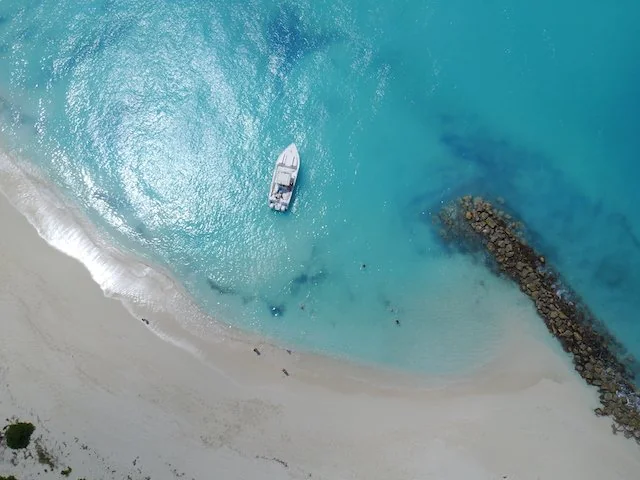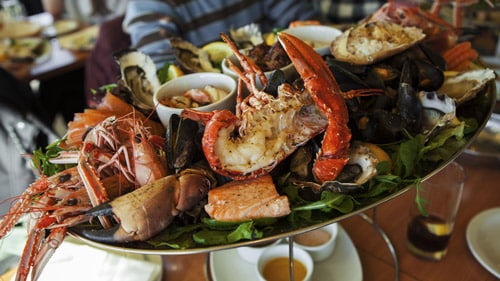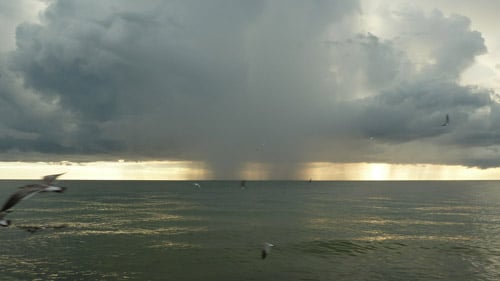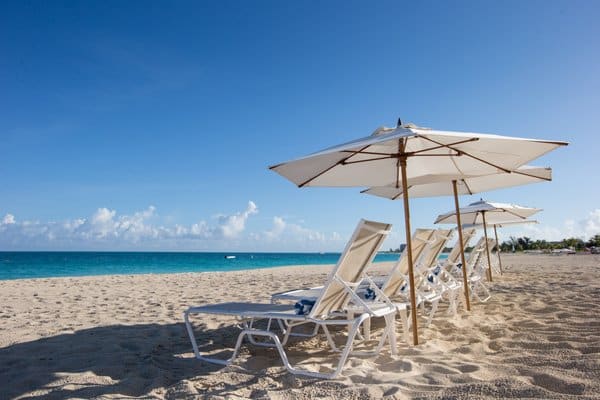
If you are planning a vacation to the Turks and Caicos Islands, you may be wondering when is the best time to travel there. The short answer is, there is really no “bad” time to visit. With exquisite white sand beaches, crystal clear turquoise waters and exciting scuba diving and snorkeling opportunities, Turks and Caicos is an ideal place for a relaxing getaway or a new adventure, any day of the year.
The weather is warm and pleasant year-round. Typical temperatures range from 80 to 85 degrees Fahrenheit during the “winter” months (November through May). During the “summer months” (June through October) the average temperature ranges between 85 and 90 degrees, occasionally reaching the mid- to high-90s. Even then, the hotter temperatures usually aren’t unbearable, as they are tempered by southeasterly trade winds and more frequent summer rain showers.
Still, depending on your particular preferences and desires, there may be some times of the year that are better for you than others. The main considerations in deciding when to visit Turks and Caicos are the timing of the rainy season and possible hurricanes, mosquitoes due to the rains, the varying costs of accommodations and activities during the year, and whether seasonal events and festivals are important to you.
Food

Enjoying fresh seafood is a favorite activity of visitors to Turks and Caicos, whether they reel in and prepare their own dinner or let the local chefs and fisherman handle the details. Wahoo, sailfish, and mahi-mahi are popular with sports fishermen and diners from October through April. Marlin, tuna and other game fish are plentiful during the summer months.
The Conch Festival takes place in November, celebrating the islands’ main expert in a delicious display of creative culinary delights. The Conch season is closed from July to October, but this local favorite is widely available during the rest of the year.
Lobster lovers should be sure to visit between August and March because the strictly enforced seasonal limitations on harvesting lobster mean you can’t savor this delicacy – fresh and locally caught – at other times.
Nassau grouper is available most of the year, but not during December, January, and February.
Hurricane Season
The official hurricane season runs from June 1 through November 30. Typically in Turks and Caicos, hurricanes are not as likely until later in the season, between August and September. If you’re traveling, it is recommended to avoid the period of August 15 to September 15. The threat of hurricanes or poor weather can cause flights to be delayed or canceled, even if inclement weather never reaches the island.
That said, Turks and Caicos is not as susceptible to major hurricanes and the islands tend to not experience damaging storms, unlike other countries in the Caribbean. Of course, no place in the world is completely immune to Mother Nature, and hurricanes have hit one or more of the islands over the years, but these are usually relatively mild. Severe storms tend to occur only occasionally, normally many years apart.
Grand Turk was devastated by Hurricane Ike in 2008; nearly 80 percent of the island’s structures were damaged. Prior to Ike, however, the islands hadn’t experienced serious hurricane damage since 1960 when Hurricane Donna dropped 20 inches (51 cm) of rain in just 24 hours. The Turks and Caicos Islands have not experienced significant hurricanes since Ike.

Even when hurricanes don’t make it to shore, more rainfall does occur during the late summer and fall months. Most of the islands’ rainfall occurs between late September and late December, with November and December being the two months with the most rain.
More rain also means more mosquitoes, so if you are visiting during the rainy season, be prepared to battle extra bugs. Usually, a little insect spray will do the trick. But if you don’t want to deal with mosquitoes at all, you’re better off taking your trip to Turks and Caicos during the drier winter and spring months.
Holidays and Seasonal Events
Another thing to consider is if you plan to take in any of the special annual events and festivals that happen at various times during the year in Turks and Caicos. The annual Kite Flying Competition is a colorful event that attracts visitors as well as locals in April, taking advantage of the spring breezes and typically dry weather. A Salt Cay festival is held each year in late April on the islet of Salt Cay, near the island of Grand Turk. South Caicos is the venue for the annual Big South Regatta during the last weekend of May. The annual Conch Festival takes place in Providenciales the last weekend of every November. Certainly, if one of these festivals, or another not listed here, are of interest to you, that would be a good time of year for your visit to the islands.
Water sports are available all year round, with plentiful opportunities to surf, snorkel, dive, kayak, kiteboard and explore the rich diversity of aquatic life. The ocean is slightly cooler and choppier during December and January, so thrill-seeking surfers and windsurfers tend to come at this time. If sailing and beach parties are your thing, consider scheduling your visit to coincide with the Fool’s Regatta, held each year between mid-June and mid-July.
“High” Versus “Low” Tourist Season

Like other Caribbean destinations, the peak tourist season in Turks and Caicos is when temperatures are coldest in mainland North America and Europe, which is generally December through April. Many people want to “escape” the snow, ice and Arctic blasts where they live. Families with kids in school or college may travel in December or January because that’s when they have breaks from their classes. You’ll need to make reservations well in advance at this time, and be prepared for significantly higher prices than you’d pay during less popular months.
At the same time, winter is when the weather is a little more mild and dry in Turks and Caicos compared to rest of the year. Many people want to come when temperatures are still “pleasantly warm,” but not “hot,” and they don’t have to deal with a lot of rain.
These are all reasons why the winter months are the islands’ peak tourist season. But the high-demand season is also when tourism-related businesses generally charge more for accommodations, tours, activities and restaurant meals. Typically, rates during the high winter tourist season can increase by as much as 30 to 50 percent compared to the lower summer season. Airfare can be more expensive as well. And not only is everything more pricey, beaches and other attractions are usually more crowded too.
What’s the answer? For many, it’s coming during the off-season, which starts in May and runs through November. Visiting during the off-season offers the advantages of fewer crowds, and lower prices for flights, accommodations, activities and even restaurants—many times 40 percent less than during the busier winter months. Visiting during the late summer or early fall allows you to explore the islands at a more leisurely pace. Just be aware that since so few tourists come during this period, some businesses close to allow owners and staff a vacation.
But there are downsides of traveling during the “low” summer tourist season. This is the season for hurricanes and rainy weather, which could mean canceled flights and fewer opportunities for sightseeing. There may also be fewer shops, tour operators, and restaurants open for business, or they may be open each day but for shorter periods of time, which may mean fewer things available to do in the afternoon. Some resorts and hotels do their remodeling and refurbishing projects during the off tourist season, which may mean closed-down pools and construction going on during your stay.
Obviously, what’s right for one person may not be for another. If your travel budget is somewhat tight, you don’t like crowds, and you’re not bothered by noisy hotel construction projects, May, June or July may be good months to travel to Turks and Caicos. However, if you want to escape northern U.S. winters, you don’t mind crowds, paying top dollar for accommodations isn’t an issue, and you don’t want to wake up to the sound of jackhammers, winter is the obvious time for you to take your trip to Turks and Caicos.
So when is the best time to take a trip to Turks and Caicos? There is no one-size-fits-all kind of answer. The key is to determine what factors are most important to you, whether that relates to costs, crowds or weather.

Of course, when considering the seasonal variation in weather in Turks and Caicos, keep in mind what’s considered a “high” or “low” temperature is usually still very pleasant. So even though 90 degrees Fahrenheit might seem warm for Providenciales in August, it may still be relatively cooler and more enjoyable than the 100+ degree days often experienced in much of United States in the heat of summer. The fact is, even during slightly-less-than-perfect weather (that might be a little on the humid or hot side), Turks and Caicos is still a wonderful escape. So ultimately, unless there’s a tropical storm in the area—which are relatively rare—there are usually only “good” and “even better” times of the year for visiting Turks and Caicos.
